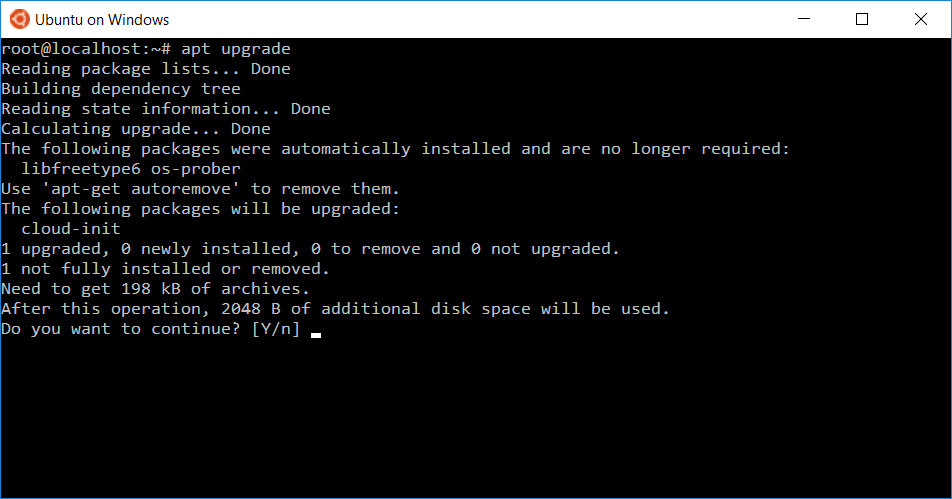As mentioned by others, bash is the same bash (other than the already noted versions) but Mac OS X uses a (mostly) BSD userland. Many of the standard system utilities have slightly different options or behave slightly differently. They're unfortunately too numerous to list here. Upgrade to bash 4 in Mac OS X Filed under: Server — Tags: bash, shell Bash 4 has some nice new features that are worth the effort of updating. How to edit your.bashprofile. For the newly initiated, here’s how you can edit the.bashprofile on your Mac. Step 1: Fire up Terminal.app. Step 2: Type nano.bashprofile – This command will open the.bashprofile document (or create it if it doesn’t already exist) in the easiest to use text editor in Terminal – Nano. Jun 28, 2020 There are plenty of reasons for having Ubuntu run on a Mac, including the ability to broaden your technology chops, learn about a different OS, and run one or more OS-specific apps. You may be a Linux developer and realize that the Mac is the best platform to use, or you may simply want to try out Ubuntu.

There are several options for installing Git on macOS. Note that any non-source distributions are provided by third parties, and may not be up to date with the latest source release.
Homebrew
Install homebrew if you don't already have it, then:$ brew install git
Xcode
Apple ships a binary package of Git with Xcode.
Coolmuster data recovery for mac. Coolmuster Data Recovery comes here to meet your demands. Recover more than 550 file formats, including photos, videos, music, docs, emails,.zip, etc. Recover deleted, formatted, or otherwise inaccessible files in any data loss situations. Recover data from not only the internal hard drive, but also all kinds of external hard disk.
Binary installer
Tim Harper provides an installer for Git. The latest version is 2.27.0, which was released 3 months ago, on 2020-07-22.
Building from Source
If you prefer to build from source, you can find tarballs on kernel.org. The latest version is 2.29.1.

When it comes to setting up your command line environment in Bash, there are two conditions by which Bash decides which files to read at startup.
The first is whether your shell is running interactively. A session runs interactively when the standard streams are actually connected to a terminal. This condition holds true most of the time; the exception is when you run Bash with the '-c' flag:

The second condition is whether your shell is declared as a login shell. Bash processes spawned from login or started with the '-' or '--login' flags believe they are login shells.
Here's the standard behavior: login shells always look for the bash configuration files with 'profile' in the name, in this order: /etc/profile, ~/.bash_profile, then ~/.bash_login and lastly ~/.profile. When login shells exit, they read ~/.bash_logout.
Non-login shells read ~/.bashrc, and non-interactive shells try not to read any files. This is essential because, when running autonomously, a shell's standard streams might be redirected, and aliases or environment variables could confound running scripts.
Well-behaved scripts or programs that use Bash don't attempt to load .bashrc, but scp and rcp aren't as well-behaved. They source .bashrc and will fail spectacularly if any part of .bashrc prints to the standard out. This is why you should keep any output-producing commands in the files read by login shells (.bash_profile and the like).
On Linux, it is customary for terminal emulators not to declare their interactive shell processes as login shells. It is assumed that by running the emulator program, you have already logged in. But if you want to share declarations and/or aliases across all interactive shells (login or not), you should put this in your .bash_profile:
This makes non-login shell customizations available to login shells.

Macos Bash Script
Unfortunately, this customary behavior isn't adhered to by Mac OS X. In the terminal emulator packaged with OS X (Terminal.app), new windows are by default opened with login shells. This can be remedied by accessing the Preferences window and, under Startup, specifying that shells should open with /bin/bash and not a login shell.
Bash For Mac Os
In summary: login shells read files like *profile*, non-login shells read ~/.bashrc, and you should fix Terminal.app.
Mac Os Mojave
Bash is a shell originally written by Brian Fox at the Free Software Foundation in 1988. It is the default shell on Linux and Mac OS X, and has even made the jump to Windows via Cygwin.
